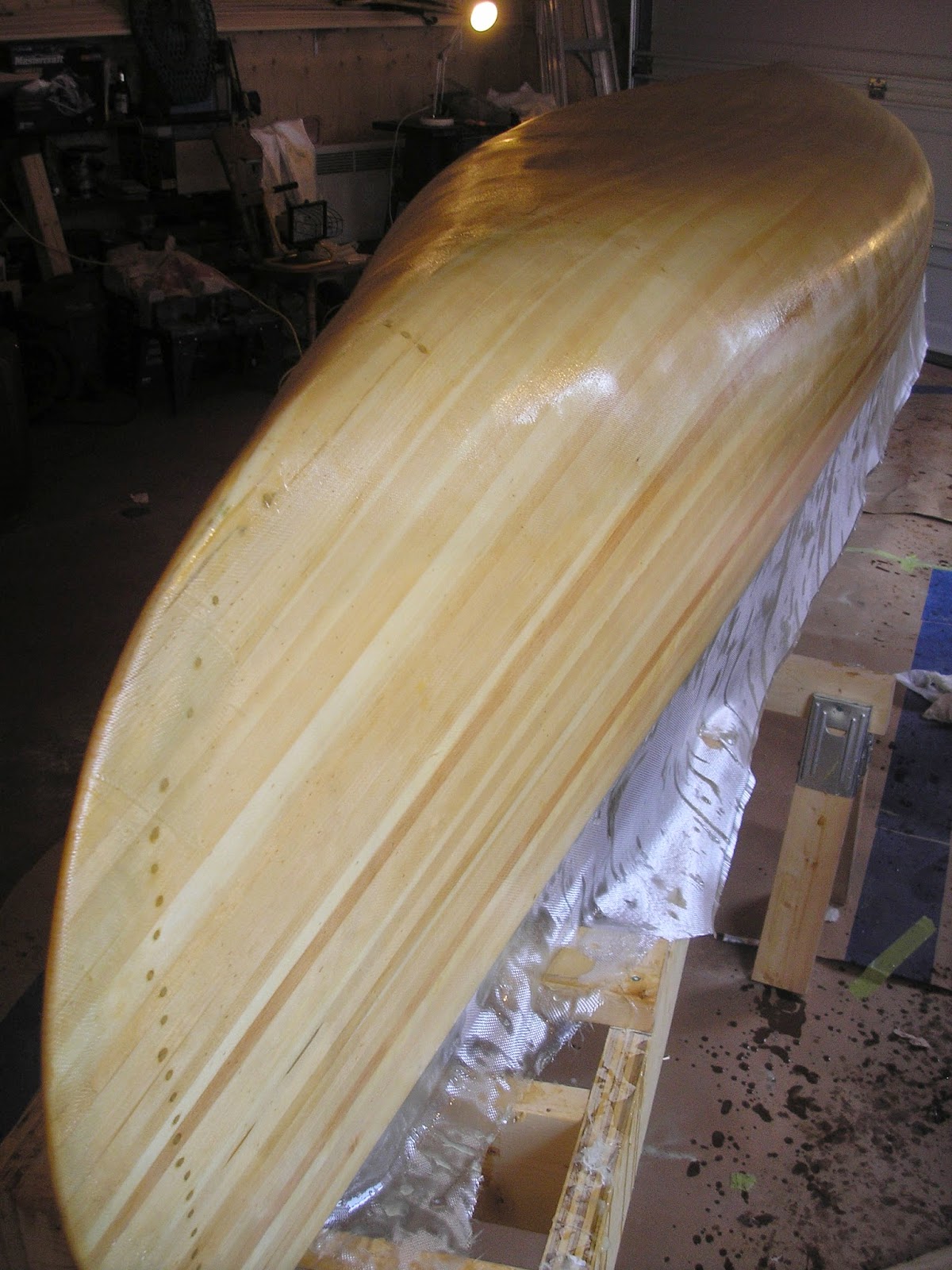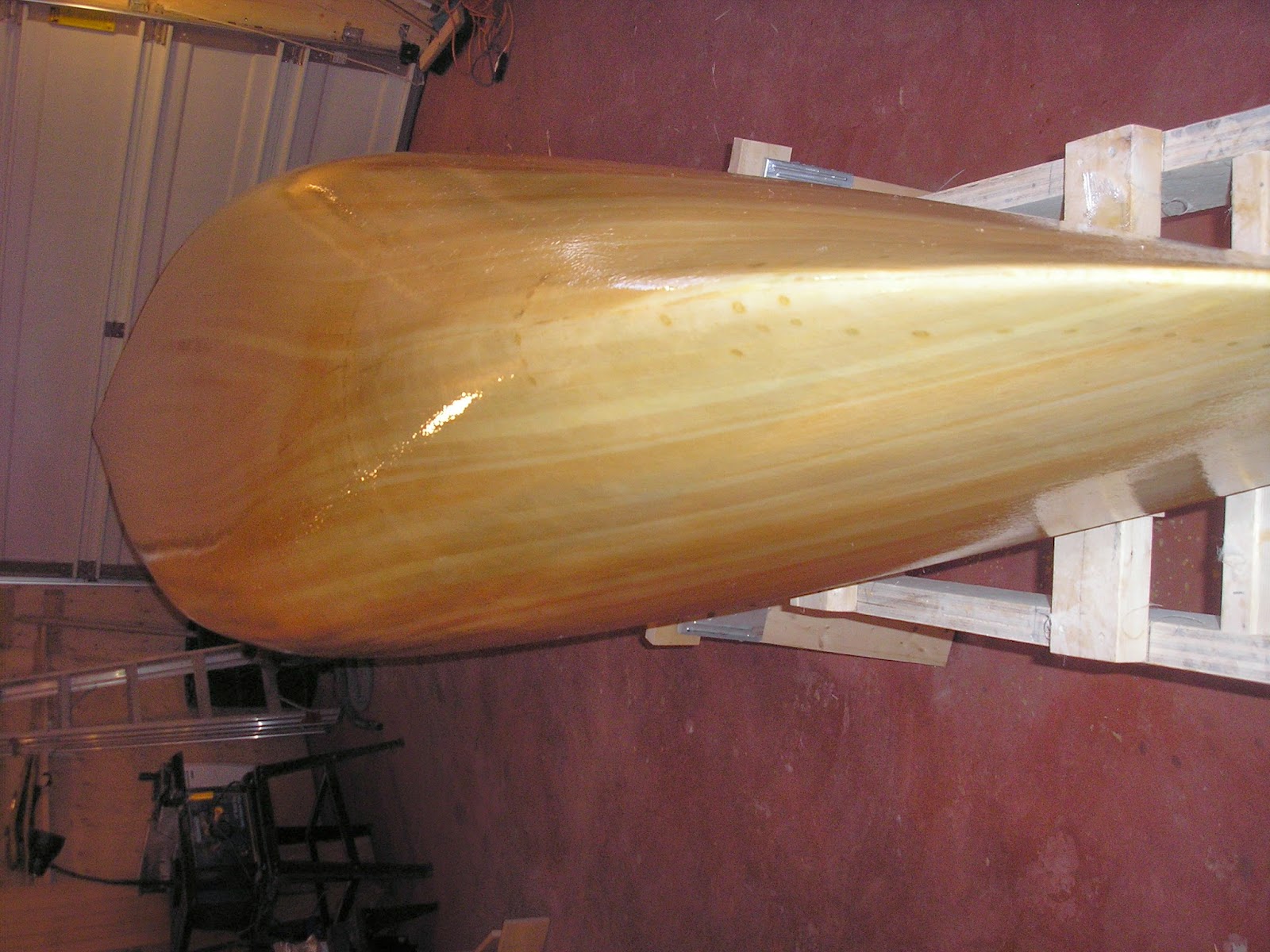Well here is the canoe with fiberglass placed on her prior to the resin coat being wetted on. Notice a crease in the cloth, but it did not appear to be an issue after wetting it out. I did the first wetting and then sanded and then did a second and third wetting, but these last two had a chemical bond.
Here is what it looked like after the first wetting.
Now here she is after a second and third wetting and the excess cloth trimmed off. I was nervous and did this fiber glassing but it went well, just took my time and did not panic. Any rough places that had the stem fiberglass wrapping around was sanded in well with the other cloth to be smooth, just one small bubble that I sanded back to wood and another section that was accidentally sanded back to wood that were both patched prior to the second and third resin coats....can't notice them.
Now here she is after being taken off the forms and turned over, I have since started to scrap off the glue inside, hope to finish that tomorrow to begin sanding. One big concern that I now have is that when cleaning up the stem area inside I was over zealous with the chisel and may have cracked the fiberglass on the extreior of the stem or that may have happened has a stress fracture when removing the stems, which I had to modify after the fact during the construction. Either way I was alarmed. I also noticed how fragile the strips are at the impact point of the stems, I hope that the resin filled will strengthen this up and easy my worries. I am also toying with the idea of putting a extra piece of fiberglass inside the stems like I did outside to add strength. Once it is all fiber glasses inside I will evaluate if the exterior stems need an additional piece of fiberglass cloth added and then feathered into the existing cloth before moving ahead with the wood work and varnish. I will let you know how this goes.























































